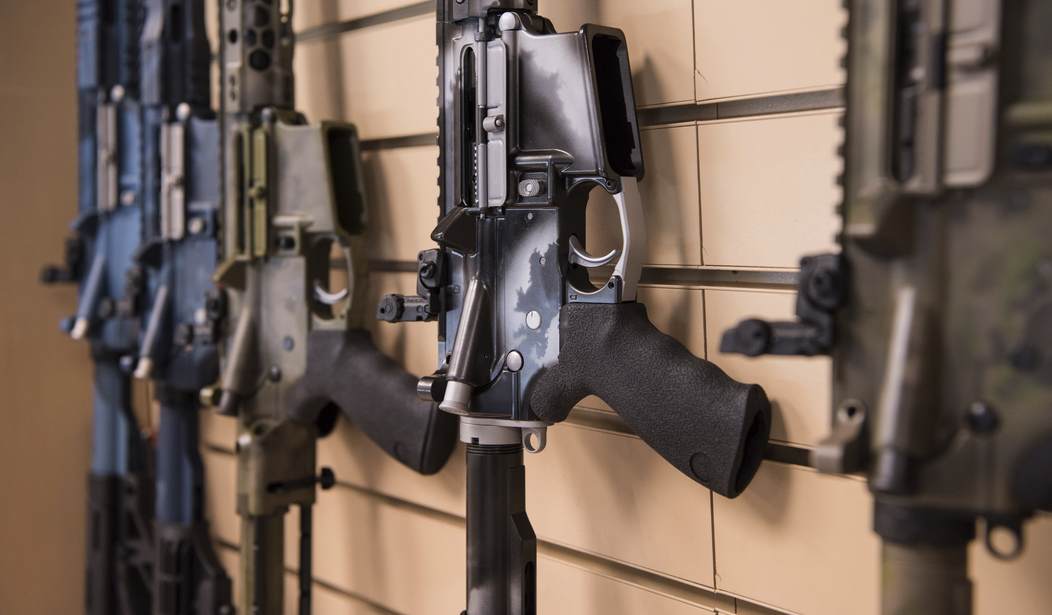On Wednesday, the Second Circuit Court of Appeals heard oral arguments in two challenges to Connecticut's ban on so-called assault weapons; one brought by the National Associaton of Gun Rights and the other by the Connecticut Citizens Defense League and the Second Amendment Foundation. The cases were appealed to the Second Circuit after U.S. District Judge Janet Bond Arterton upheld the gun ban in a decision last August, opining that the guns prohibited by the state were "dangerous and unusual" weapons that were not commonly used in self-defense, and therefore beyond the scope of the Second Amendment's protections.
Contrary to Arterton's ruling, the Supreme Court has not held that the Second Amendment only protects arms used in self-defense. Instead, it's repeatedly stated that arms commonly used for lawful purposes including self-defense are protected under the right to keep and bear arms. Still, attorneys for the state latched on to Arterton's erroneous interpretation of the Supreme Court's Second Amendment decisions in their defense of the state's gun ban.
Thankfully, at least one of the three judges on the panel pushed back on Connecticut's assertion, asking if their argument meant that commonly-owned rifles and shotguns used for hunting could be banned without violating the Second Amendment.
Connecticut argues that only brandishing and firing count when determining how often certain guns are used for self-defense. One judge responds by saying that most police officers never fire their gun outside a firing range during their career, but it still counts as being used…
— Firearms Policy Coalition (@gunpolicy) October 16, 2024
The word salad offered by the state's attorneys don't make much sense. They suggested that since bolt-action hunting rifles or over/under shotguns haven't been prohibited by the state, they're "democratically protected", but may not be "constitutionally protected". They then claimed that guns like hunting rifles don't need to have any kind of constitutional protection because guns that are popular won't be prohibited, before finally contending that state officials "probably" couldn't ban those rifles and shotguns because they're not "unusually dangerous."
The attorneys for NAGR and CCDL/SAF both argued that the semi-automatic firearms banned under Connecticut's "assault weapon" prohibitions aren't "dangerous and unusual" or "unusually dangerous", noting that the law prohibits the sale and possession of some of the most popular rifles in the country.
Josh Perry, on behalf of the Connecticut Attorney General’s office, disagreed. He argued Wednesday that the U.S. has a deep history of restricting the ownership of rifles that are just like the AR-15 — namely, the M16.
As acknowledged by the parties, AR-15-style rifles are similar to M16-style weapons. But a key difference lies in their firing modes. AR-15s are typically semiautomatic, while the military-focused M16s can be fired fully automatic. Perry argued that this alone doesn’t make the guns as different as the plaintiffs would like the court to believe, however.
“They still haven’t shown why these weapons are not just like the M16s, which it would be startling if states could not regulate,” Perry said, adding that an AR-15 can be “easily converted” to M16-style semiautomatic fire, and can “empty its magazine of 30 rounds in as little as five seconds.”
The "deep history" of prohibiting semi-automatic rifles stretches back less than 40 years. If there truly is no difference between a fully-automatic machine gun and a semi-automatic rifle, why didn't Congress include semi-autos in their list of restricted firearms under the National Firearms Act? For that matter, why did the federal government allow the sale of surplus semi-automatic M1 Garand rifles through the Civilian Marksmanship Program?
Perry's argument that AR-15s can be "easily converted" to full-auto fire and should be treated like machine guns was also recently disputed by Solicitor General Elizabeth Prelogar during oral arguments before the Supreme Court in the Vanderstok case challenging the ATF's rule treating unfinished frames and receivers as "firearms". Prelogar stated that AR-15s (and presumably, other semi-automatic rifles) are "obviously something that's designed and intended to be used for semi-automatic fire," adding that the ATF "has never suggested that AR-15s, standing alone, are regulated machine guns."
If the legislative and executive branches have never treated semi-automatic firearms as machine guns, there's no basis for the judiciary to conclude they're one and the same. If the Second Circuit adopts Connecticut's argument, it wouldn't just mean that some of the most popular rifles and shotguns in the country could be prohibited, but that the most commonly owned handguns wouldn't be protected by the Second Amendment either.
Arterton's decision to uphold Connecticut's ban was deeply flawed in a couple of different respects, and the Second Circuit panel has the opportunity to set the record straight by adhering to the Supreme Court's "text, history, and tradition" test.
The national tradition of gun ownership includes the possession of such "unusual" weapons as the long rifle in the 1700s, revolvers in the mid-1800s, lever action and repeating rifles in the latter part of the 19th century, and semi-automatic rifles and handguns in the early 1900s. At one point in time, each of these technological advances would have been considered new and unusual technology, but there's not a scintilla of evidence to suggest that prohibitions on those firearms were commonplace, much less in accordance with the text of the Second Amendment's guarantees.
The guns banned by Connecticut are commonly owned for lawful purposes by millions of Americans. Neither Congress nor the executive branch treats them the same as machine guns. Reversing Arterton's original ruling should be a slam dunk for the Second Circuit, but unfortunately, it's entirely possible that the panel will adopt her errors as their own instead of reaching a logical, and constitutionally sound, conclusion.









Join the conversation as a VIP Member